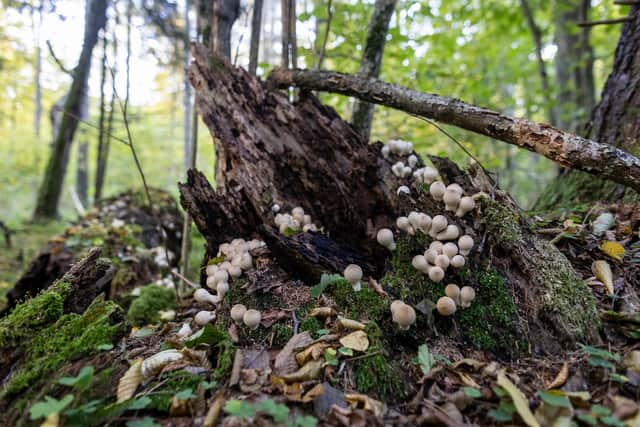Climate change may be creating a new threat from potentially life-threatening, drug-resistant fungal infections – Professor Neil Gow
The World Health Organisation recently published a list of 19 species (its ‘Fungal Bogeymen’) that cause more deaths every year than malaria, TB, HIV, breast and prostate cancer combined. Yet the reputation of the nastiest remains largely off the public radar in Britain.
So, let me tell you more about them, and remind everyone that we should be on the lookout for what they can potentially do to us. Fungi are microbes but very different from viruses, bacteria, and parasites, and so require their own bespoke medicine. They are yeasts and moulds and curiously animal-like, in many ways even similar to us.
Advertisement
Hide AdAdvertisement
Hide AdConsequently, magic-bullet antifungal antibiotics are scarce. The biggest red alert against fungi is there isn’t a single vaccine for those that cause human infections, and we have only a few antifungal drugs. Also, serious fungal diseases are often difficult to distinguish from other infections and fevers.
As a result, diagnosis of a fungal infection can mean a poor prognosis of recovery. Not all fungal infections are life-threatening, of course. More than 100 million women a year suffer from recurrent thrush, for instance, and fungal skin infections are the commonest human infections of all. Not deadly perhaps, but miserable conditions that cost billions to treat.
Of the many serious invasive fungal diseases, only less than half of those who become infected survive, even with appropriate medical treatment. In our post-Covid world, however, they have found a new and unwanted reputation: co-infections associated with them (like flu, diabetes, even cancers) on the back of other medical problems, invariably make things worse.
The key to dealing with them is early diagnosis and treatment. Drug-resistant bacteria have historically been associated with slow, deadly, and accelerating global pandemics and concerns have now grown for drug-resistant fungal infections.
Agricultural fungicides often use azole drugs, and we’re already seeing a huge rise in environmental drug resistance in human pathogens with strains now arriving, pre-resistant, into hospital settings. Fungi are slippery, adaptable organisms, so climate change poses little direct threat to them.


Indeed, we may be seeing new human pathogens emerge due to climate change, such as Candida auris which may have adapted to higher temperatures allowing them to colonise and infect warm human bodies for the first time.
Pathogens in critical food crops such as wheat are also spreading across new areas of the world as global temperatures rise. But let’s not completely vilify the bogeymen without pointing out how important and useful the fungal kingdom can be.
There are ten times more fungal species than plants and each of us probably take a useful fungal product every day of our lives. They give us antibiotics, statins, immune-suppressant and anti-cancer drugs and the flavours for life in blue cheeses, fermented foods and drinks including wine, beer, and whisky. Seven Nobel prize winners have revealed the scientific secrets of life through studies of fungi. So, they can be fun guys as well as rotters.
Advertisement
Hide AdAdvertisement
Hide AdNeil AR Gow is deputy vice-chancellor for research and impact and professor of microbiology at the MRC Centre for Medical Mycology at the University of Exeter; and a fellow of the Royal Society of Edinburgh
Comments
Want to join the conversation? Please or to comment on this article.